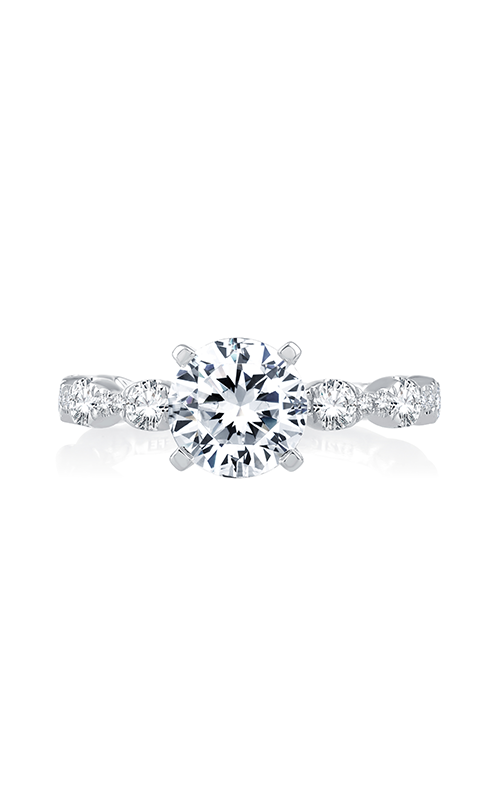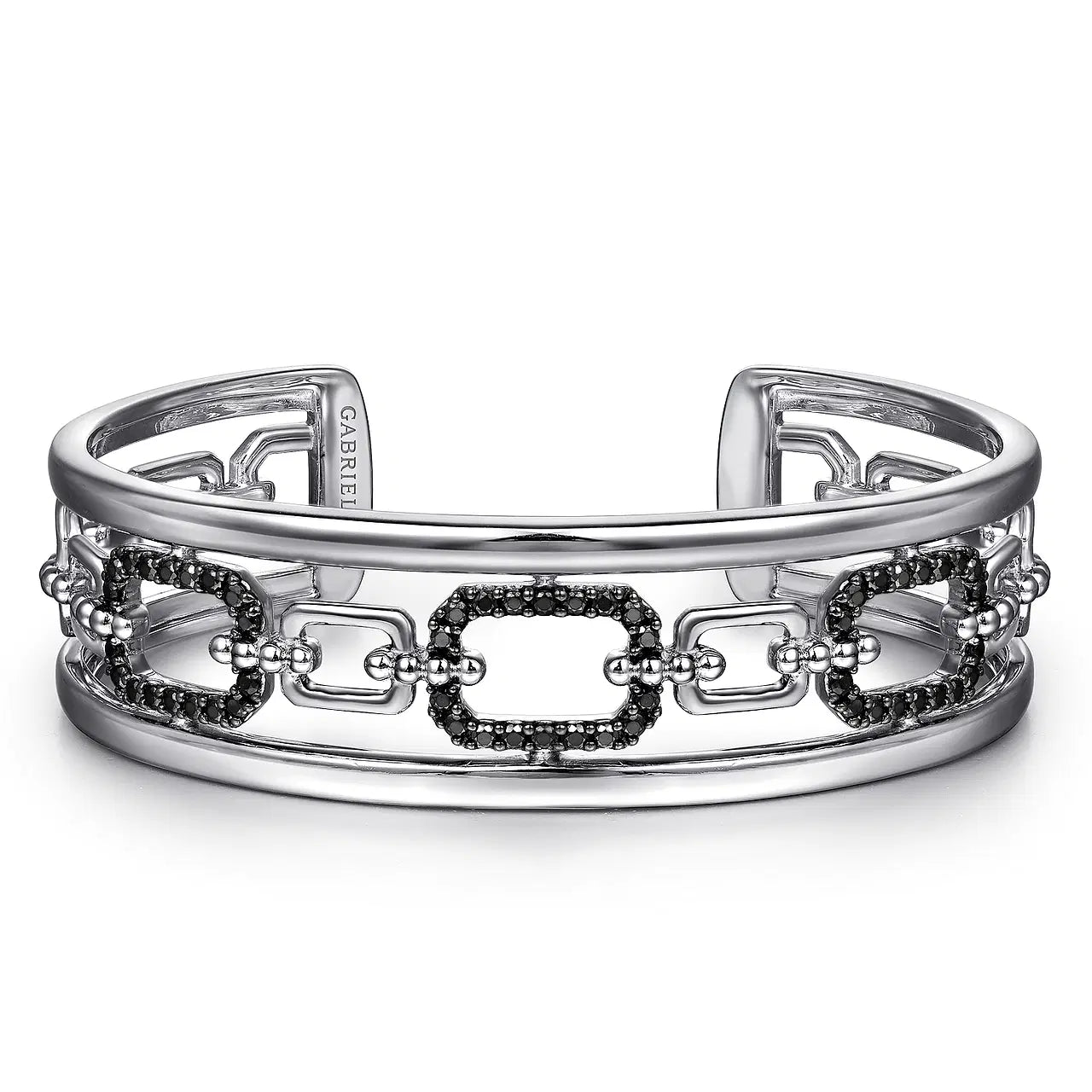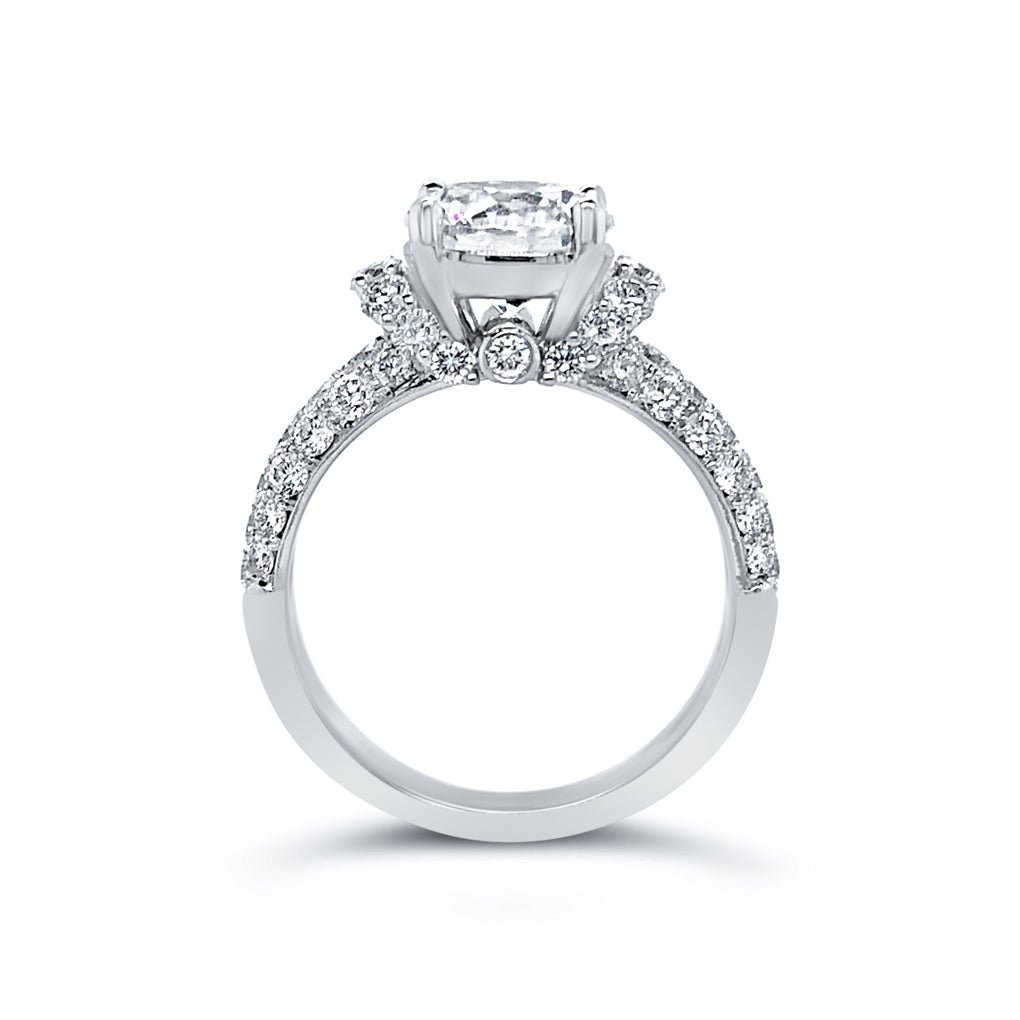Article: Lab Grown Diamonds and Natural Stones: Major Distinctions Explored
Lab Grown Diamonds and Natural Stones: Major Distinctions Explored
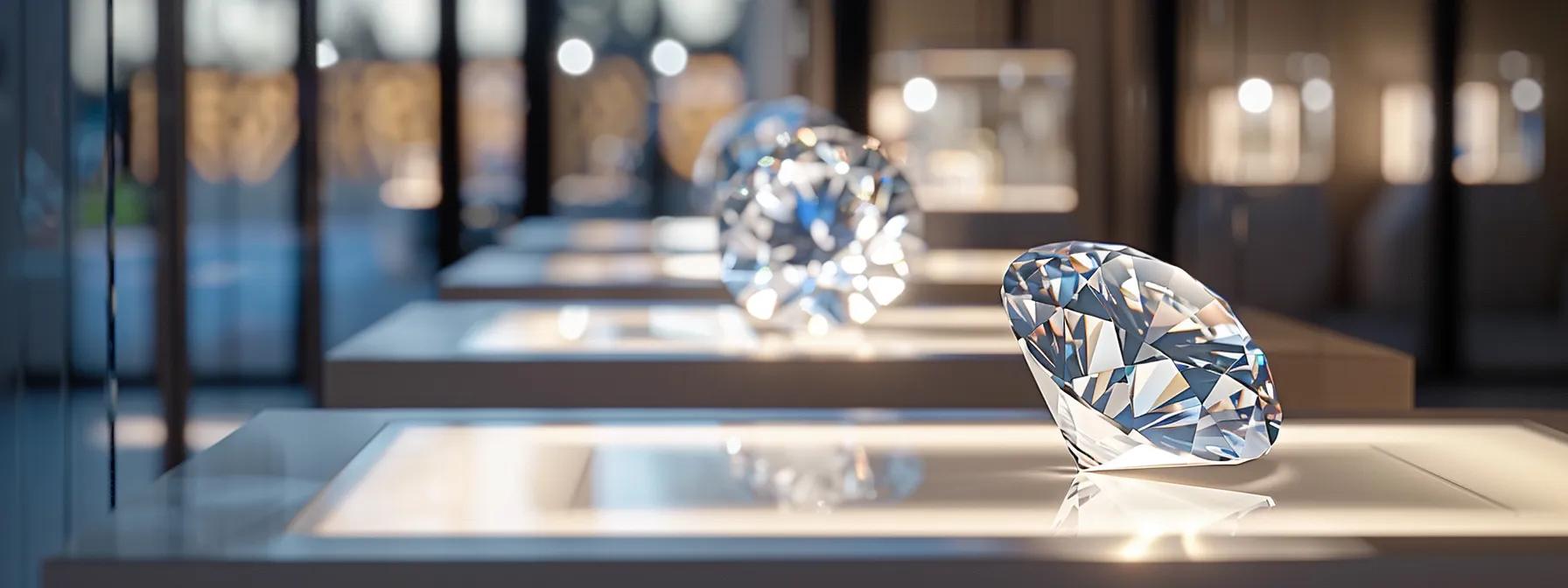
Lab Grown Diamonds vs Natural: Key Differences Explained
In today's fast-evolving jewelry market, understanding the differences between lab grown and natural diamonds is essential when making an informed purchase. Many consumers have questions such as, "Is a lab grown diamond a real diamond?" and "How do the cost and value of lab grown versus natural diamonds compare?" This article aims to answer those questions in detail by exploring the fundamental distinctions in formation, physical properties, cost factors, ethical considerations, and certification processes between these two types of gemstones. We will examine how natural diamonds are born deep within the Earth over billions of years under conditions of immense pressure and heat, while lab grown diamonds originate in controlled industrial environments using advanced technologies such as chemical vapor deposition and high-pressure high-temperature methods. We also address concerns regarding chemical composition, brilliance, hardness, resale value, and even environmental impact that play a role in consumer decisions like choosing a wedding ring or fine jewelry piece.
By delving into peer-reviewed studies that examine differences in nitrogen content and diamond clarity, we will shed light on the scientific evidence that differentiates natural diamonds from their lab-created counterparts. For example, research by the Gemological Institute of America highlights that while both types share a similar crystal structure, subtle differences exist in fluorescence and growth patterns. This piece is designed not only to educate but also to empower you—whether you're engaged, planning a wedding, or simply a jewelry enthusiast—to confidently navigate your diamond choices. Let’s explore the many aspects that define and differentiate
.
Defining Lab Grown and Natural Diamonds
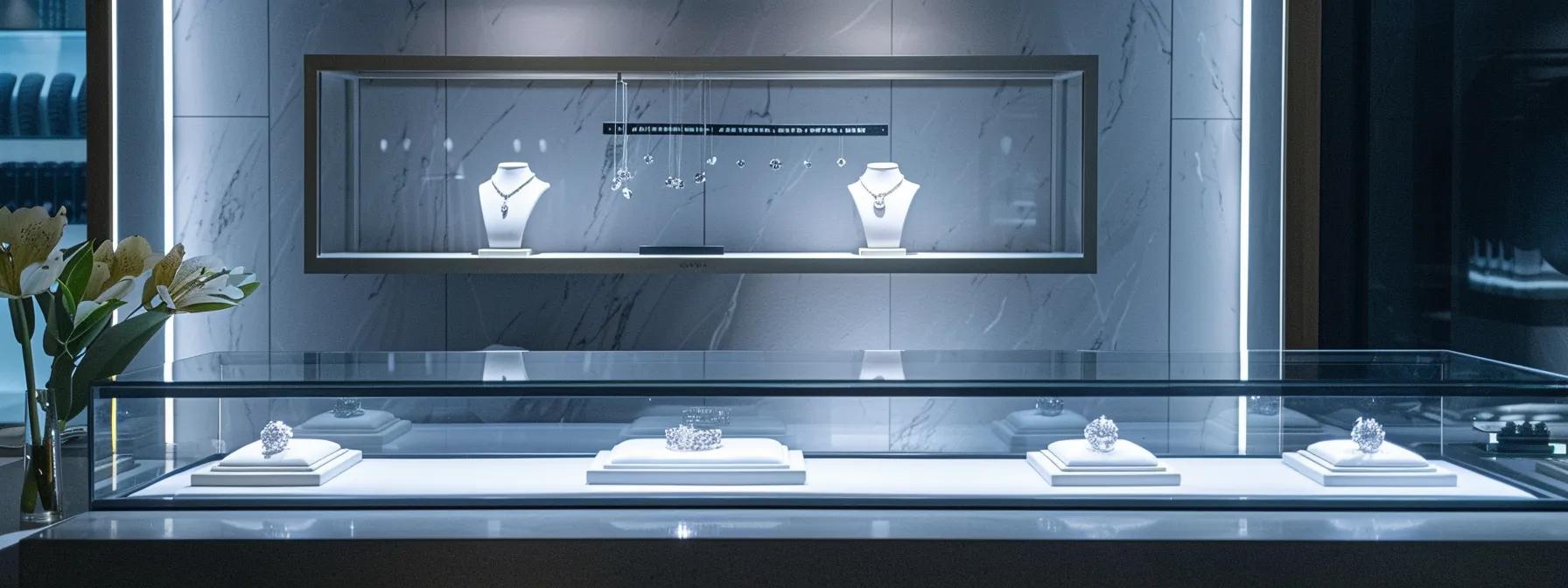
Understanding the basics of diamond formation establishes the groundwork for comparing lab grown and natural diamonds. Natural diamonds form over billions of years under extreme geological pressure and heat deep within the Earth’s mantle. These diamonds are then transported to the surface through volcanic eruptions. Their unique crystal structure and formation process not only determine their rarity but also contribute to the overall allure and perceived value of these gemstones in the jewelry market. In contrast, lab grown diamonds are created in controlled laboratory settings using advanced methods such as High Pressure High Temperature (HPHT) or Chemical Vapor Deposition (CVD). These modern techniques replicate the natural conditions that form diamonds, albeit in a much shorter timeframe.
Understanding Natural Diamond Formation Processes
Natural diamond formation is an extraordinary process that occurs over billions of years. Under conditions of intense pressure and high temperature, carbon atoms bond in a crystalline structure to form diamonds. Geological processes such as kimberlite eruptions subsequently bring these diamonds closer to the Earth’s surface. The uniqueness of natural diamonds lies in their diverse inclusion patterns and trace element compositions, including nitrogen impurities that affect color and clarity. This time-intensive formation process means that each natural diamond carries with it a piece of Earth's geological history, which many consumers value for its rarity and authenticity.
Understanding Lab Grown Diamond Creation Methods
Lab grown diamonds are produced using either HPHT or CVD techniques that simulate the natural conditions of diamond formation. In HPHT, carbon is subjected to high pressure and high temperature similar to natural conditions within the Earth, while CVD involves breaking down molecules in a gas form which then deposit on a diamond seed, gradually building the diamond layer by layer. These processes are meticulously controlled to ensure the resulting diamonds have the same crystal structure and physical properties as natural ones. As a result, lab grown diamonds exhibit exceptional optical quality and comparable hardness, making them virtually
under normal observational conditions.
Are Lab Grown Diamonds Considered Real Diamonds?
Yes, lab grown diamonds are categorically real diamonds because they have the same chemical, physical, and optical properties as natural diamonds. Both lab grown and natural diamonds are composed of carbon atoms arranged in a crystal lattice. Despite their distinct origins, neither type is a simulant like moissanite. The distinction between “real” and “simulated” diamonds is crucial, particularly for ethical considerations, pricing, and value retention within the market. Research published by the International Gemological Institute confirms that the spectroscopic signatures of lab grown diamonds mirror those of natural diamonds, ensuring that they meet the rigorous standards required for fine jewelry.
Distinguishing Lab Diamonds From Simulants Like Moissanite
It is important to differentiate lab grown diamonds from other diamond simulants such as moissanite. Unlike moissanite, which is a silicon carbide crystal and has distinct optical properties including a higher refractive index and different fire dispersion, lab grown diamonds have a carbon composition identical to natural diamonds. While moissanite may exhibit a different brilliance and sparkle under certain lighting conditions, lab grown diamonds mimic the natural diamond’s properties in aspects like hardness (Mohs hardness of 10), refraction, and thermal conductivity. This ensures that lab grown diamonds are not only visually appealing but also reliable choices for everyday jewelry such as wedding rings.
Key Takeaways: - Natural diamonds are formed over billions of years under extreme geological conditions, while lab grown diamonds are produced in controlled industrial environments. - Both types exhibit identical chemical and physical properties, including a Mohs hardness of 10. - Lab grown diamonds are considered real and not simulants, standing apart from alternatives like moissanite.
Comparing the Physical and Optical Properties
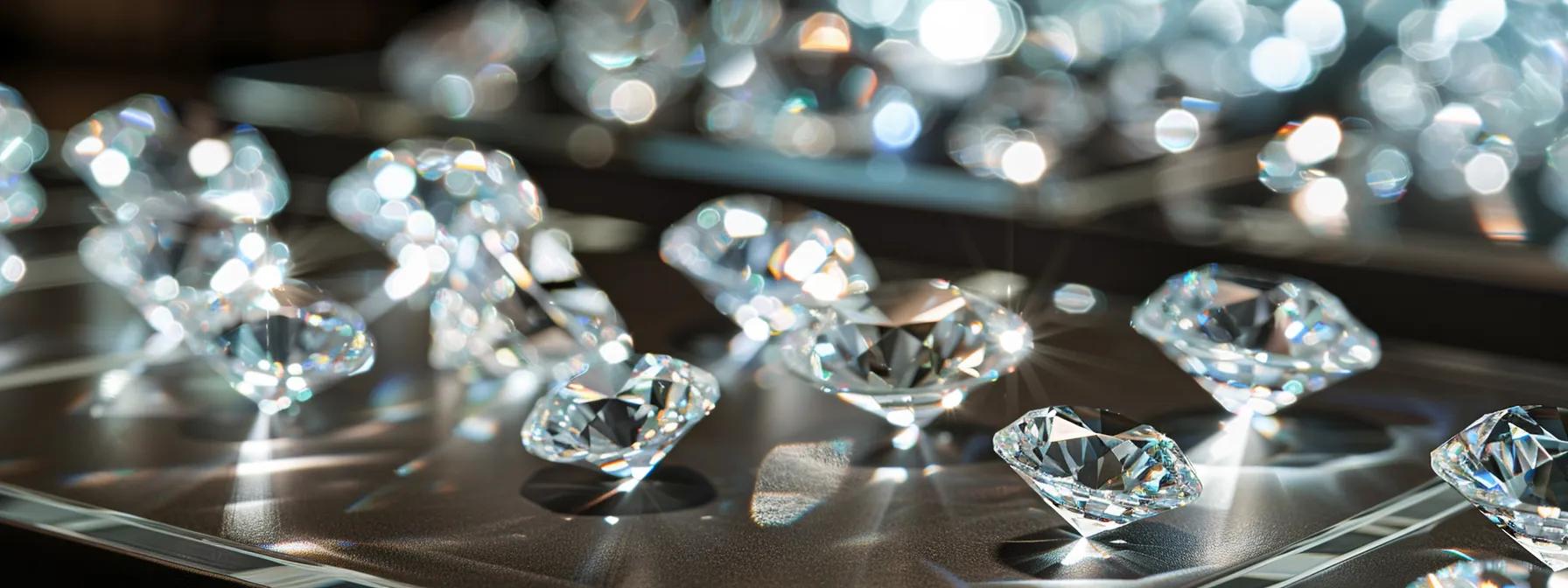
Physical and optical properties are critical in evaluating diamonds, regardless of origin. Both natural and lab grown diamonds share key characteristics due to their carbon composition. However, while their basic traits remain similar, detailed analysis reveals differences that can influence consumer perception, especially when considering factors like diamond clarity, facet, fluorescence, and brilliance.
Chemical Composition a Shared Trait
The chemical composition of both natural and lab grown diamonds is fundamentally the same—they are made of pure carbon atoms arranged in a crystalline lattice. This inherent similarity ensures that features such as hardness, refractive index, and thermal conductivity remain consistent across both types. However, natural diamonds can contain trace impurities like nitrogen or boron, which may impart slight color variations, whereas lab grown diamonds can be engineered for superior color purity. Studies have shown that by controlling conditions during lab growth, manufacturers can minimize undesirable inclusions, resulting in gem-quality stones that often score higher on clarity scales.
Assessing Hardness and Durability of Both Diamond Types
Both lab grown and natural diamonds exhibit unmatched hardness on the Mohs scale, ranking a solid 10. This exceptional durability is what makes diamonds ideal for everyday wear, particularly in items like engagement rings and wedding bands. Hardness studies reveal that the internal stress profiles and resilience to scratching are nearly identical in both types. Nonetheless, some subtle differences in internal defect structures may exist, but these do not meaningfully impact the overall performance of the diamond in jewelry applications. In stress tests conducted by the Gemological Institute of America, both diamond types showed negligible differences in resistance to surface abrasions and structural integrity, ensuring
and sustained brilliance.
Brilliance and Sparkle Identical to the Untrained Eye
To the average consumer, the brilliance and sparkle of lab grown diamonds are virtually identical to those of natural diamonds. The quality of a diamond’s cut, regardless of its origin, determines how light is reflected and refracted through its facets. When viewed under standardized lighting conditions, both types can offer dazzling displays provided they are expertly cut. Advanced laser cutting techniques have further refined the cutting process for lab grown diamonds, ensuring that they display superior fire and scintillation that equals or sometimes even surpasses that of natural stones. The gemological analysis also points out that any minute differences can only be discerned using specialized instruments, affirming that in everyday scenarios, the visual performance of both is indistinguishable.
Can Experts Visually Differentiate Lab Grown From Natural Diamonds?
Even to trained gemologists, distinguishing between lab grown and natural diamonds without specialized equipment is a challenging task. While advanced techniques such as infrared spectroscopy or high-powered microscopes can reveal differences in growth structures and trace element distributions, these methods are not typically used by casual buyers. For most real-world applications in fine jewelry, the visual appearance remains uniform, meaning that the expert inspection under normal magnification levels would not reliably differentiate one from the other. Peer-reviewed research published by the Federal Trade Commission further supports that expert evaluations in a routine setting may not detect differences, which highlights the practicality of lab grown diamonds as a credible alternative to natural ones.
Key Takeaways: - Both diamond types share identical chemical composition and are extremely durable, with a Mohs hardness rating of 10. - Lab grown diamonds can have enhanced clarity and color purity due to controlled growth environments. - Visually, their brilliance and sparkle are nearly indistinguishable from natural diamonds, even among experts under normal conditions.
Examining Differences in Cost and Long-Term Value

The cost and long-term value of diamonds differ significantly between lab grown and natural origins. Consumers are often drawn to lab grown diamonds due to their lower upfront cost, yet questions remain about their resale value and investment potential compared to natural diamonds. It is important to analyze various factors such as production methods, market demand, and economic conditions to determine which option might make a more sound financial decision.
Price Variances Between Lab Created and Mined Diamonds
Lab grown diamonds typically cost 20% to 40% less than their natural counterparts. This price difference arises due to the more efficient and less resource-intensive production process of lab grown stones. Whereas natural diamonds require extensive mining operations, exploration, and are subject to supply chain complexities including the Kimberley Process Certification Scheme to ensure ethical sourcing, lab grown diamonds bypass many of these cost drivers. For consumers looking for a high-quality gemstone without the premium markup, a lab diamond offers similar aesthetic and physical qualities at a more accessible price point. Data from the Federal Trade Commission indicates that the reduced costs can translate into significant savings for investment buyers, making high-carat lab diamonds more attainable.
Factors Influencing the Cost of Each Diamond Type
Multiple variables influence the final cost of a diamond. In natural diamonds, factors include rarity, geographical mining conditions, brand reputation, and the labor-intensive extraction process. Lab grown diamonds, on the other hand, are largely influenced by technological advancements, production scale, and innovation in chemical vapor deposition techniques. The cost structure of lab grown diamonds benefits from economies of scale and controlled manufacturing environments that tend to decrease production costs over time. Additionally, innovations in laser technologies and improved synthesis methods help drive down costs while maintaining quality, making these diamonds increasingly popular among budget-conscious yet discerning consumers.
Resale Value a Key Difference for Buyers
One of the most debated aspects in diamond purchasing is resale value. Natural diamonds have long been associated with a stable resale market due to their rarity and the historical significance attached to them. However, the resale value of lab grown diamonds is still evolving. While some industry experts argue that lab grown diamonds may depreciate faster due to their more abundant supply, others note that improvements in production and consumer acceptance are likely to stabilize their long-term value. Market trends suggest that for buyers prioritizing initial cost savings, lab grown diamonds may be the more pragmatic choice, whereas investors looking for long-term asset preservation might lean toward natural stones despite the higher initial expenditure.
Investment Potential of Natural Versus Lab Grown Stones
When considering diamonds as an investment, natural diamonds often hold a more traditional allure due to their historical track record as a store of value and symbols of enduring rarity. However, lab grown diamonds are gaining acceptance, particularly among younger demographics who favor environmental sustainability and ethical production. Research by prominent gemology institutes indicates that while natural diamonds currently retain a higher perceived investment value, lab grown diamonds are projected to gain market credibility as consumer preferences shift. Ultimately, the choice depends on the buyer’s priorities—whether they value heritage and scarcity over innovation and cost-efficiency.
Key Takeaways: - Lab grown diamonds are less expensive than natural diamonds, often costing 20% to 40% less. - Cost differences stem from production methods, technological efficiencies, and ethical considerations. - Natural diamonds generally command higher resale values, though lab grown diamonds are gaining market acceptance. - Investment decisions should weigh immediate cost savings versus long-term value preservation.
Ethical Considerations and Environmental Impact

Ethical sourcing and environmental impact have become increasingly important factors for diamond buyers. Natural diamond mining has historically been associated with significant ecological disruption, humanitarian concerns, and a controversial supply chain. In contrast, lab grown diamonds present a more environmentally friendly and ethical alternative, as their production eliminates many of the negative externalities linked to traditional mining practices. With heightened consumer awareness about blood diamonds and the Kimberley Process, many modern buyers preferentially choose options that align with their values.
Environmental Effects of Natural Diamond Mining
Natural diamond mining is a resource-intensive process that often results in extensive environmental degradation. Mining operations typically disturb large areas of land, leading to deforestation, soil erosion, and contamination of local waterways. Moreover, the energy consumption and carbon emissions associated with large-scale extraction have raised concerns about sustainability, particularly in an era of global climate change. Historical data has shown that regions with extensive diamond mining operations encounter long-term ecological imbalances that can affect local biodiversity and community health. Thus, for many consumers, the environmental cost of a natural diamond can be a deciding factor in their purchasing decision.
The Ecological Footprint of Lab Diamond Production
Lab grown diamonds, produced using methods like chemical vapor deposition and high-pressure high-temperature synthesis, offer a significantly lower environmental footprint compared to natural mining processes. Because these diamonds are created in controlled laboratory settings, they require less land, reduce habitat destruction, and generate fewer carbon emissions. Studies have demonstrated that lab grown diamond production can utilize renewable energy sources and advanced recycling techniques to further minimize environmental impact. For environmentally conscious consumers, lab grown diamonds provide the added benefit of conflict-free sourcing and a lower ecological burden, making them an attractive option in today’s sustainability-driven market.
Ethical Sourcing Concerns in the Natural Diamond Trade
While efforts have been made to ensure that natural diamonds are mined and traded ethically through protocols such as the Kimberley Process Certification Scheme, issues persist. Many natural diamonds have historically been linked to conflict regions, human rights abuses, and exploitative labor practices. These challenges have led to increased demand for transparency and verified ethical sourcing in the industry. Consumers are increasingly scrutinizing the provenance of their gemstones, with many preferring companies that can provide documented proof of ethical practices. This trend has spurred market innovations and the adoption of blockchain technology for provenance tracking, yet concerns remain regarding the complexity and cost associated with ensuring full ethical compliance.
Lab Grown Diamonds as a Conflict-Free Alternative
One of the most compelling arguments in favor of lab grown diamonds is their status as a conflict-free alternative. Since lab grown diamonds do not require traditional mining, they bypass many of the ethical and environmental issues associated with natural diamond extraction. Their production is fully controlled, ensuring that there is no association with human rights abuses or environmental damage. This aspect is especially appealing to modern buyers who value sustainability and corporate social responsibility. Retailers offering lab grown diamonds often emphasize the absence of conflict and the reduced ecological footprint, aligning with the values of environmentally conscious and ethically minded consumers.
Key Takeaways: - Natural diamond mining often incurs significant environmental damage and ethical concerns. - Lab grown diamonds are produced in controlled environments with a lower carbon footprint. - Ethical sourcing remains a challenge for natural diamonds despite certification efforts. - Lab grown diamonds offer a conflict-free and sustainable alternative, appealing to modern ethical consumers.
Understanding Diamond Grading and Certification
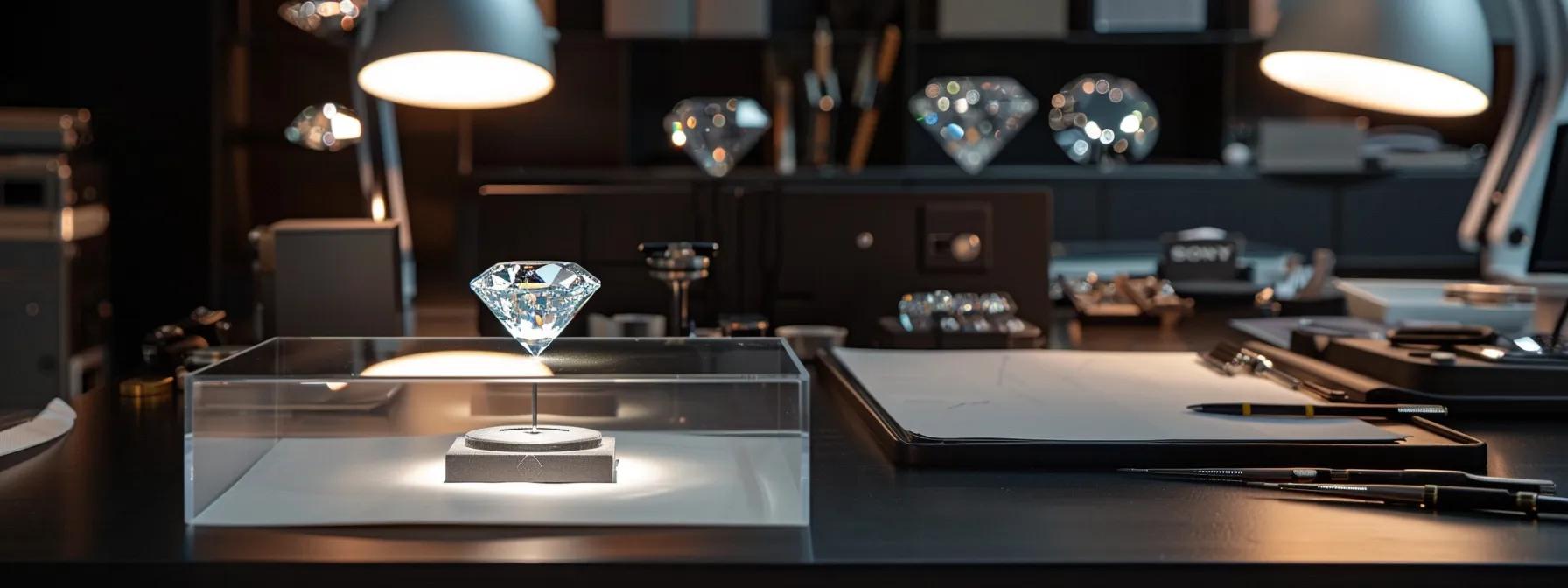
Diamond grading and certification are critical for determining the quality, value, and authenticity of every diamond, regardless of its origin. Both lab grown and natural diamonds are evaluated using the industry-standard Four Cs: carat, cut, color, and clarity. Certification from respected bodies such as the Gemological Institute of America (GIA) or the International Gemological Institute (IGI) offers consumers assurance regarding the diamond’s specifications and overall quality. While the fundamental grading parameters are the same, subtle differences in growth patterns and trace elements can provide insight into a diamond’s origin, which gemologists use as an additional tool for distinguishing between lab grown and natural stones.
The Four Cs Apply to Both Lab and Natural Diamonds
Both lab grown and natural diamonds are assessed on the Same Four Cs criteria—carat, cut, color, and clarity—ensuring a standardized approach in the industry. Carat measures the weight of the diamond, cut determines the quality of the polish and symmetry affecting its brilliance, color evaluates the presence of any bias from the colorless ideal, and clarity involves the absence of internal inclusions or external blemishes. This uniform grading system ensures that consumers can compare diamonds on a like-for-like basis regardless of their origin. The consistency in grading helps maintain trust in lab grown diamonds as they match natural stones not only chemically but also in their cutting standards and mineralogical quality.
Reputable Gemological Laboratories for Diamond Certification
Certification from reputable gemological laboratories forms the cornerstone of trust in the diamond market. Laboratories such as the GIA, IGI, and the American Gem Society rigorously analyze both lab grown and natural diamonds, providing detailed grading reports that describe the diamond’s physical and optical characteristics, growth patterns, and any chargeable differences that might determine its origin. These certifications are crucial for resale value and consumer protection, particularly when significant investments are made in high-carat stones. Reputable certifications ensure that each diamond meets stringent quality control standards and that consumers receive accurate information to drive informed purchasing decisions.
How Growth Patterns Can Identify Diamond Origin
One of the subtle but definitive ways to distinguish lab grown from natural diamonds is by examining their growth patterns. Under magnification, natural diamonds reveal irregular crystal structures and inclusions that chronicle millions of years of geological evolution. By contrast, lab grown diamonds often display more uniform growth patterns due to the standardized conditions under which they were created. Advanced microscopic techniques and infrared spectroscopy allow gemologists to analyze these specific features. The identification of these patterns is a critical factor in determining authenticity and ensuring that consumers are aware of exactly what they are purchasing.
Nitrogen Content as a Distinguishing Factor for Gemologists
Nitrogen is a common impurity in natural diamonds, and its presence or absence can significantly influence the diamond's color and overall grade. In natural diamonds, nitrogen often causes a yellowish tint, while lab grown diamonds can be engineered to minimize nitrogen content and thus achieve near-perfect color grades. Detailed analysis using spectroscopic techniques can reveal the distribution and concentration of nitrogen within the stone. This factor, coupled with other growth characteristics, provides gemologists with the tools necessary to differentiate between a lab grown stone and its naturally occurring counterpart. Understanding these chemical signatures is essential for both appraisal purposes and for ensuring fair market practice.
Key Takeaways: - Diamond grading follows the universally accepted Four Cs for both lab grown and natural diamonds. - Certification from reputable institutions like the GIA and IGI is essential for quality assurance. - Growth patterns and nitrogen content can serve as indicators of a diamond’s origin. - Detailed grading reports help maintain transparency, supporting informed consumer decisions.
Making Your Choice Between Lab Grown and Natural Diamonds
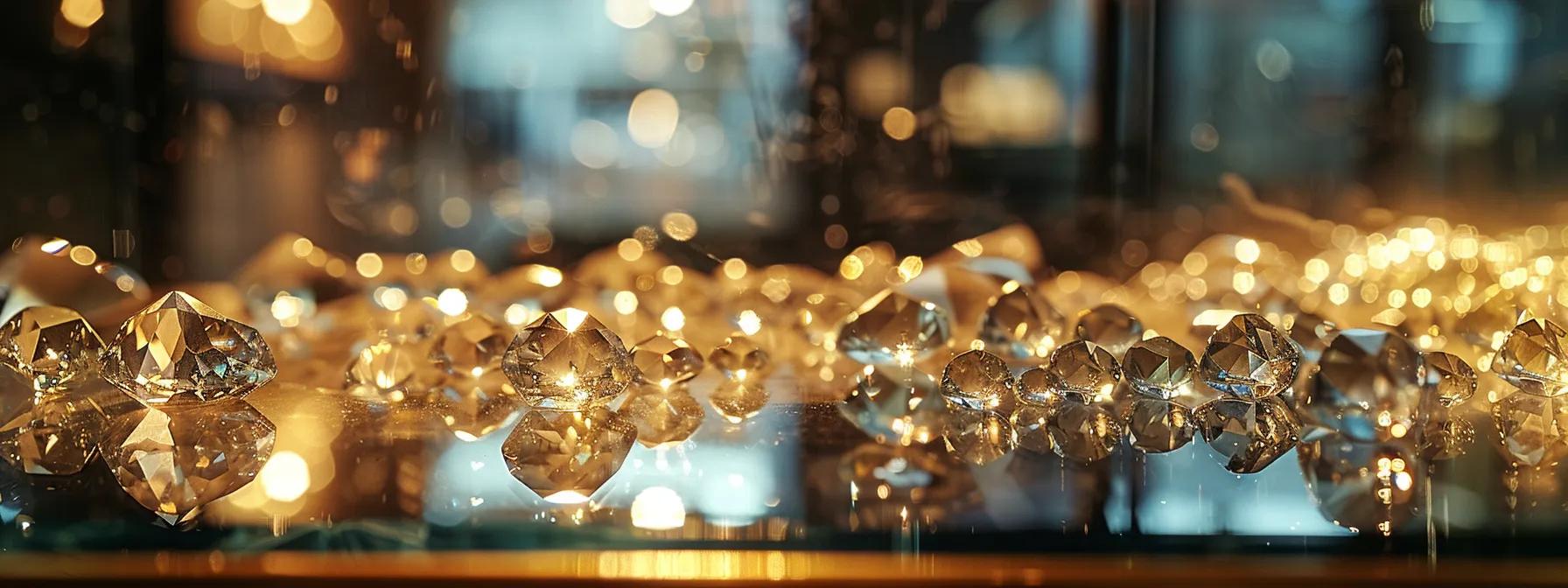
When it comes to choosing between lab grown and natural diamonds, several factors come into play, including personal values, budget considerations, and aesthetic preferences. While both types of diamonds offer stunning beauty and durability, the choice often hinges on the buyer's priorities. Some consumers place a premium on the rarity and historical provenance of natural diamonds, which are formed over billions of years deep within the Earth. Others may prefer lab grown diamonds due to their ethical advantages, lower price point, and environmental benefits. This decision is particularly significant when considering high-end jewelry purchases for engagements, weddings, or investment pieces.
Aligning Your Selection With Personal Values
For many buyers, the decision to purchase a lab grown versus a natural diamond is influenced by personal and ethical considerations. If sustainability, conflict-free sourcing, and environmental impact are leading concerns, lab grown diamonds offer a compelling alternative. Their production method minimizes the ecological footprint and sidesteps many of the controversies surrounding traditional mining practices. Conversely, consumers who value the natural origin and the history imprinted in each natural diamond may find a greater emotional appeal in owning a stone that took billions of years to form. Understanding your own priorities—whether they lean toward sustainability or tradition—will help guide your choice.
Budget Considerations for Your Diamond Purchase
Budget is often a decisive factor in the diamond selection process. Lab grown diamonds generally provide better value for money compared to natural diamonds. They can offer similar physical and aesthetic qualities at a significantly lower price due to their controlled production process and the absence of mining-related costs. This price advantage allows consumers, especially those planning significant purchases such as engagement rings or wedding bands, to allocate savings elsewhere. On the other hand, natural diamonds, with their higher resale value and long-standing market appeal, might be preferred by buyers looking for a long-term investment. Evaluating your budget constraints and financial goals is essential in making an informed decision.
Availability of Different Shapes and Sizes in Both Types
Both lab grown and natural diamonds come in a wide variety of shapes, sizes, and cuts, offering extensive choices for the modern consumer. Whether you are interested in a classic round brilliant, a princess cut, or a more unique shape like an emerald or oval, you are likely to find options that suit your style and purpose within either category. Lab grown diamonds can be produced to meet specific design requirements with a high degree of consistency, while natural diamonds offer an element of uniqueness with each stone boasting its own distinct inclusions and growth characteristics. This broad spectrum of options ensures that there is something available for every taste and every budget, making the choice less about availability and more about personal preference.
The Growing Popularity of Lab Grown Diamond Options
The market for lab grown diamonds has been experiencing substantial growth due to increased consumer awareness and evolving attitudes toward sustainability and ethical sourcing. As technological advances continue to improve the quality and reduce the cost of lab grown diamonds, more buyers are weighing these factors alongside traditional markers of luxury. Major retailers and fine jewelry brands are now incorporating lab grown diamonds into their collections, providing reliable alternatives that satisfy both aesthetic and ethical criteria. This rising popularity is reflective of a broader shift in consumer behavior, where innovation and environmental considerations are becoming as important as, if not more than, the historic allure of naturally occurring gemstones.
Key Takeaways: - Your choice between lab grown and natural diamonds should reflect your personal values around ethics and sustainability. - Lab grown diamonds generally offer a lower price without sacrificing quality, allowing for greater budget flexibility. - Both options provide a vast assortment of shapes and sizes to suit diverse design needs. - The popularity of lab grown diamonds is increasing, driven by technological improvements and consumer demand for conflict-free, sustainable jewelry.
Final Thoughts
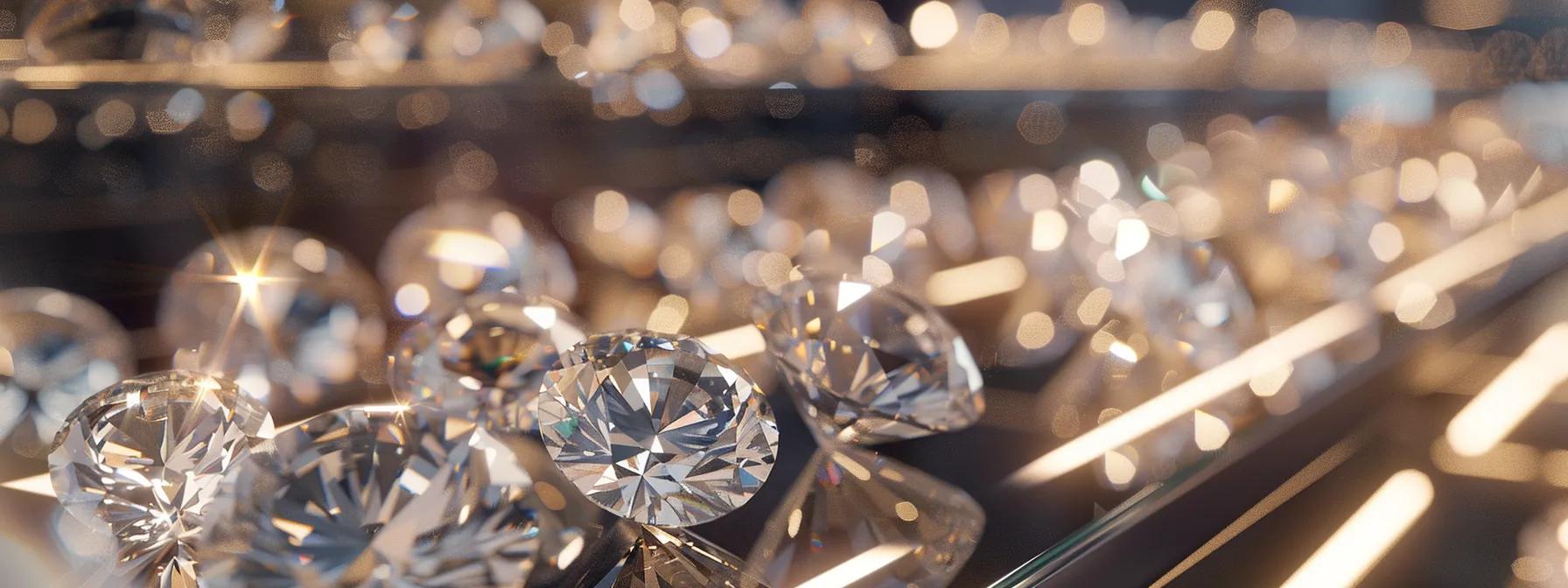
After exploring the key differences between lab grown and natural diamonds, it is clear that both options offer unique advantages. Natural diamonds, with their rich geological history, carry an enduring symbol of rarity and tradition, while lab grown diamonds shine through with modern innovation, affordability, and ethical production. As a leading authority in the diamond industry, The Diamond Store USA provides expert guidance and an extensive collection to suit every taste and budget. We encourage you to consider your priorities carefully—whether it is long-term investment value or sustainable, conflict-free sourcing—as you make your next high-end jewelry purchase.
Frequently Asked Questions
Q: How do lab grown diamonds compare to natural diamonds in terms of quality? A: Lab grown diamonds possess the same chemical and physical attributes as natural diamonds. Both types exhibit a perfect score on the Mohs scale and similar optical properties, making them virtually indistinguishable to the naked eye and ensuring excellent durability for everyday use.
Q: Are lab grown diamonds a sustainable option? A: Yes, lab grown diamonds are considered more environmentally friendly as their production eliminates the extensive land disturbance and ecosystem damage associated with natural diamond mining. They also offer a conflict-free alternative that aligns with ethical sourcing standards.
Q: Can lab grown diamonds be used for investment purposes? A: While natural diamonds traditionally have higher resale values due to their rarity, lab grown diamonds are gaining market acceptance. They may not currently offer the same long-term investment value, but their lower cost makes them an attractive option for buyers prioritizing affordability and ethical production.
Q: How can I tell if a diamond is lab grown or natural? A: Differentiating between lab grown and natural diamonds typically requires specialized equipment. Gemological laboratories use advanced testing methods such as infrared spectroscopy to assess growth patterns and trace elements like nitrogen, which can indicate the diamond’s origin.
Q: Does the diamond grading process differ for lab grown and natural diamonds? A: No, both diamond types are evaluated under the same grading system—the Four Cs. Certified reports from renowned institutions like the GIA or IGI provide detailed information on carat, cut, color, and clarity, ensuring that consumers receive a high-quality product regardless of origin. Q: Do lab grown diamonds have the same sparkle as natural diamonds?
Do lab grown diamonds have the same sparkle as natural diamonds??
When it comes to lab-grown diamonds, one of the biggest questions I often get asked is whether they have the same sparkle as natural diamonds. It’s totally understandable to be curious about this—after all, when you're investing in something as significant as a diamond, you want to make sure it shines just right! The good news is that lab-grown diamonds and natural diamonds are chemically and structurally identical. They both possess the same physical properties, including brilliance and fire, which contribute to that eye-catching sparkle we all love. In simple terms, yes, lab-grown diamonds dazzle just like their natural counterparts.
What’s fascinating is that the sparkle factor primarily comes from the diamond’s cut. Whether it's a lab-grown diamond or a natural one, a well-cut diamond will reflect light beautifully, creating that stunning shimmer. So, if you choose a lab-grown diamond that has been expertly cut, you’ll be treated to the same dazzling sparkle you'd expect from the finest natural diamond. Plus, lab-grown diamonds tend to be more affordable, which means you could potentially get a larger stone with the same breathtaking sparkle for your budget. So, if you're weighing your options, rest assured that when it comes to shine, lab-grown diamonds truly hold their own!
Q: What should I consider when choosing between lab grown and natural diamonds for my engagement ring? A: Consider factors such as budget, ethical sourcing, personal values, and long-term value. Lab grown diamonds offer cost advantages and sustainability, while natural diamonds carry historical rarity and robust resale potential. The Diamond Store USA provides an expert consultation to help align your selection with your priorities.


